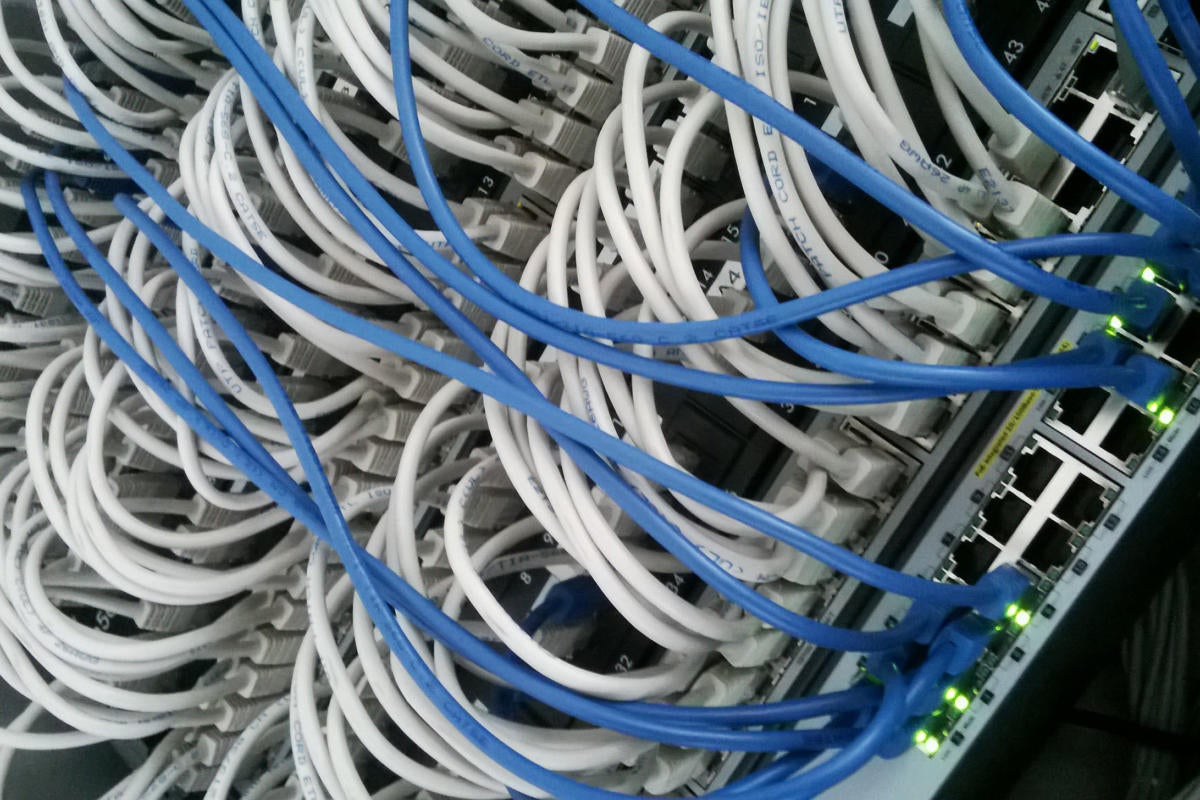- I recommend the Pixel 9 to most people looking to upgrade - especially while it's $250 off
- Google's viral research assistant just got its own app - here's how it can help you
- Sony will give you a free 55-inch 4K TV right now - but this is the last day to qualify
- I've used virtually every Linux distro, but this one has a fresh perspective
- The 7 gadgets I never travel without (and why they make such a big difference)
Rockport Networks debuts the “switchless” network

A startup called Rockport Networks has exited stealth mode with an intriguing product: a switchless network. It claims the Rockport Switchless Network product can move data faster and with better latency than switched networks.
In a Rockport Switchless Network, switching functionality has been reassigned to intelligent endpoint network cards where these devices (nodes) become the network. Each device has an FPGA and can connect up to 24 endpoints to a dedicated 1U SHFL (pronounced “shuffle”) optical device using passive cabling.
SHFLs need no power or cooling and can be linked together to scale out the network. Ethernet and InfiniBand traffic can be carried over the Rockport network. The network cards are standard, low-profile half height, half length (HHHL) PCIe cards.
In addition to the FPGA, the switchless network uses existing Mellanox ConnectX-5 drivers to take advantage of the network offload and performance-enhancing features of the ConnectX-5, while supporting all native libraries and commands, such as native InfiniBand IB Verb commands in RDMA and RoCE.
“We made it our mission to get data from a source to a destination faster than oher technologies. Removing the switch was crucial to achieve significant performance advantages in an environmentally and commercially sustainable way,” said Doug Carwardine, CEO and co-founder of Rockport Networks in a statement.
The Rockport Network Operating System (rNOS) runs on the network card to fully offload network processing from the compute cores and server operating system. The rNOS enables the network to self-discover, self-configure and self-heal. It continually optimizes the best path through the network to minimize congestion and latency.
rNOS divides traffic into small pieces it calls FLITs, which are prioritized by importance, so vital traffic is not slowed down. The FLITs are interleaved and transmitted together so that large frame or packet network transfers don’t hold up smaller ones.
Network admins use the Rockport Autonomous Network Manager (ANM) to configure, manage, and monitor the network. ANM continuously monitors all aspects of the network in a temporal or a time-series database. It stores 30 days of historical data, allowing network administrators to scroll back in for troubleshooting.
Rockport makes some mighty bold claims about adopting its designs. It claims the Switchless Network consumes between 34% and 69% less energy compared to switch-based technologies, eliminates up to 72% of cabling, and reduces rack space and weight by as much as 77%. All of which reduces the carbon footprint of the data center.
Lining Up HPC Customers
Rockport may be new out of the gate with the Switchless Network but it is racking up HPC customers fast. Its biggest get is the University of Texas’ Advanced Computing Center (TACC) in Austin. Rockport announced a collaboration with TACC to create a Center of Excellence in Austin.
TACC houses Frontera, the fastest supercomputer on a university campus and the 10th most powerful supercomputer in the world. TACC has installed 396 nodes on Frontera running production workloads on Rockport’s switchless network including quantum computing, pandemic-related life sciences research as well as science-oriented HPC workloads.
Rockport also landed Durham University, which uses the Switchless Network on its COSMA HPC cluster and is working with Ohio State University, which houses the Ohio Supercomputer Center, for research on new performance-intensive network standards.
Rockport was founded in 2012. It has taken in $18.8 million of venture, grant, and debt financing, according to Crunchbase.
Copyright © 2021 IDG Communications, Inc.

